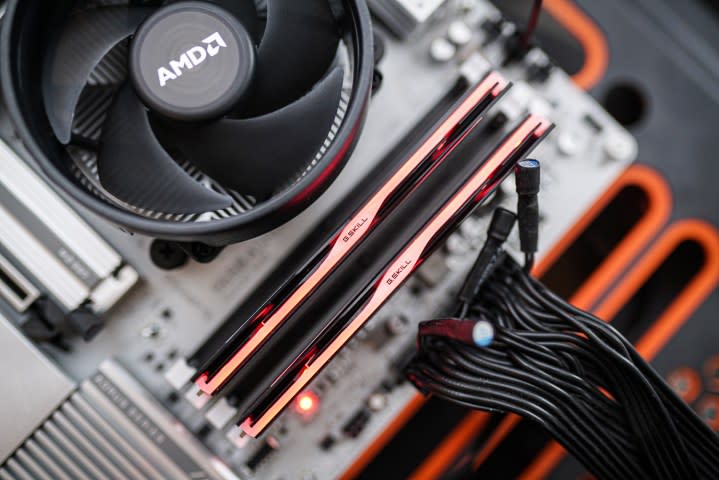A massive PC upgrade could arrive in 2025

Rumors are starting to circulate about DDR6 memory, and it could arrive sooner than you think. A rumor posted by DarkmontTech shows some preliminary targets for next-gen DDR6 memory, and it sounds like a massive upgrade.
There isn’t any information about where this slide is from, but it claims that DDR6 is on track for release sometime next year with a massive bump to speed, which lines up with some early rumors about DDR6 from a few years ago. The slide says that speeds of 8.8 GT/s to 17.6 GT/s are expected for the initial version, and that could climb all the way up to 21 GT/s. For reference, DDR5 operates between 4.8 GT/s and 6.4 GT/s, with some newer kits reaching up to 8.4 GT/s.
HELLLOOOO NURSE pic.twitter.com/Eq7mVEHnqq
— Darkmont (@DarkmontTech) May 21, 2024
Backing up the claim, however, is a presentation from JEDEC (the group behind the DDR standard), which details the future work on low-profile DDR6 modules. Initially, DDR6 will target the peak speed of what we see with DDR5 at around 8.8 GT/s, but it’ll go much faster shortly after being introduced. That’s usually what we see with new memory standards, anyway.
Although DDR6 is supposedly targeting a 2025 release, it may take a while before Intel and AMD support the standard on their platforms. For instance, the initial specification for DDR5 was released in July 2020, but it took more than a year for Intel to launch its Core i9-12900K with support for the new memory standard. And it took AMD more than two years to launch its Ryzen 9 7950X with support for DDR5.
We have a way to go before DDR6 becomes the cutting-edge memory standard, so don’t throw out your DDR5 kit just yet. Even with that, the speed advantage here is very impressive. Although speeds will initially be lower, DDR6 is targeting speeds close to the GDDR6 memory we see in graphics cards. Memory on graphics cards is generally much faster than system memory, so it’s quite the jump.
It comes at an important time, too. We’ve seen an influx of devices that need access to fast memory out of the box. There are handhelds like the ROG Ally that share memory across a CPU and GPU, as well as a trend toward soldered memory in gaming laptops. On both fronts, faster memory should improve performance on chips without dedicated video memory. We’re seeing more chips that pack memory onto the die itself, too, such as the Apple M3 and Intel’s upcoming Lunar Lake processors.
Although DDR6 is in development, the timeline and speed targets here remain a rumor. If true, however, it’s an aggressive pace for release in a time when DDR5 is still expensive and DDR4 remains an option on high-end CPUs like the Core i9-14900K.

